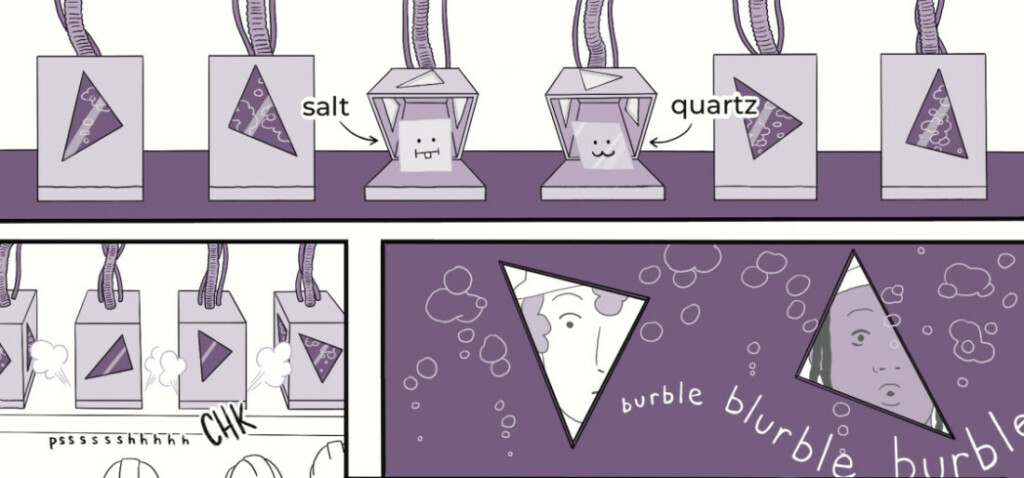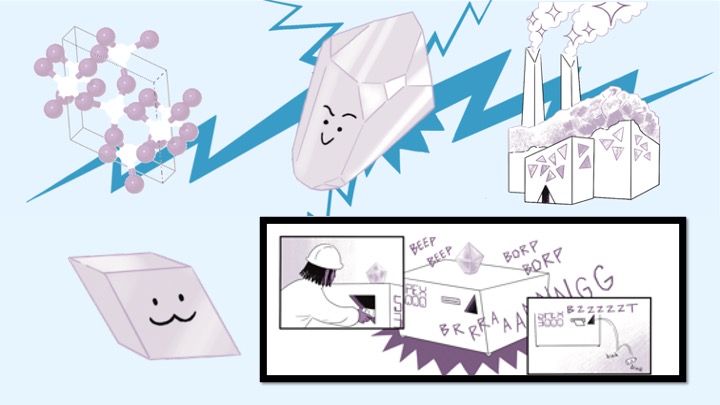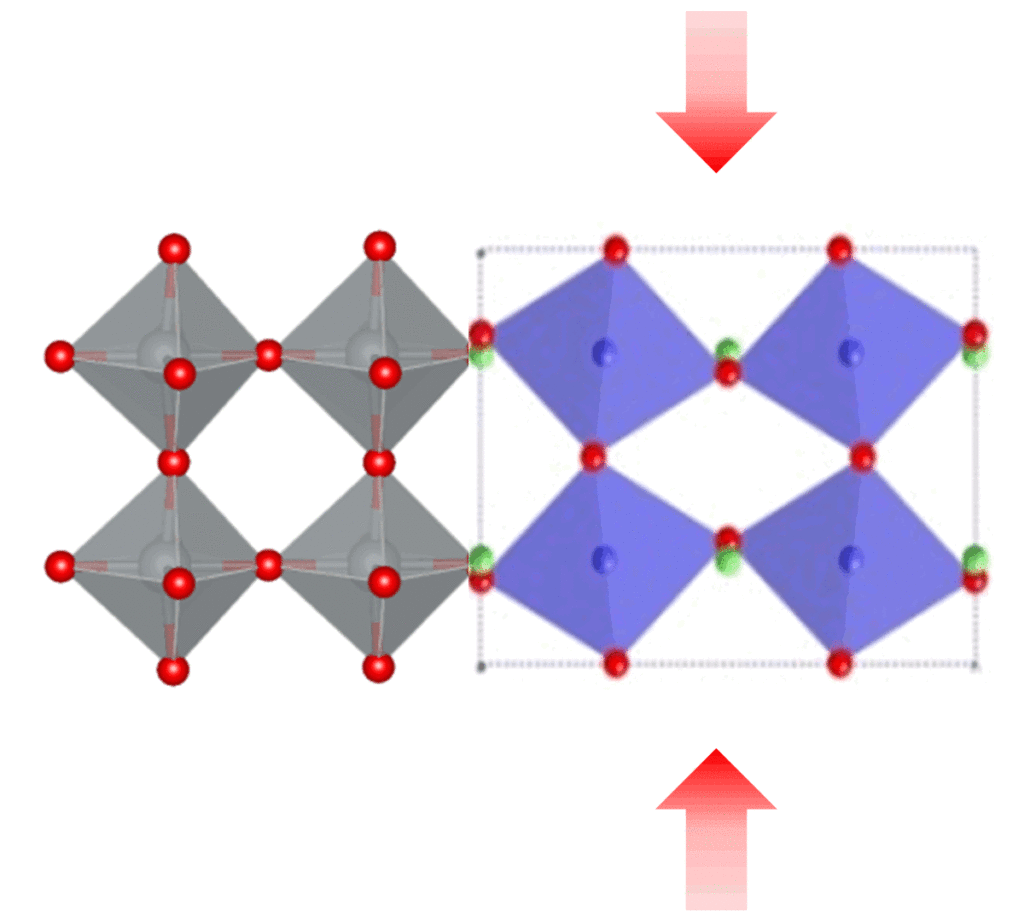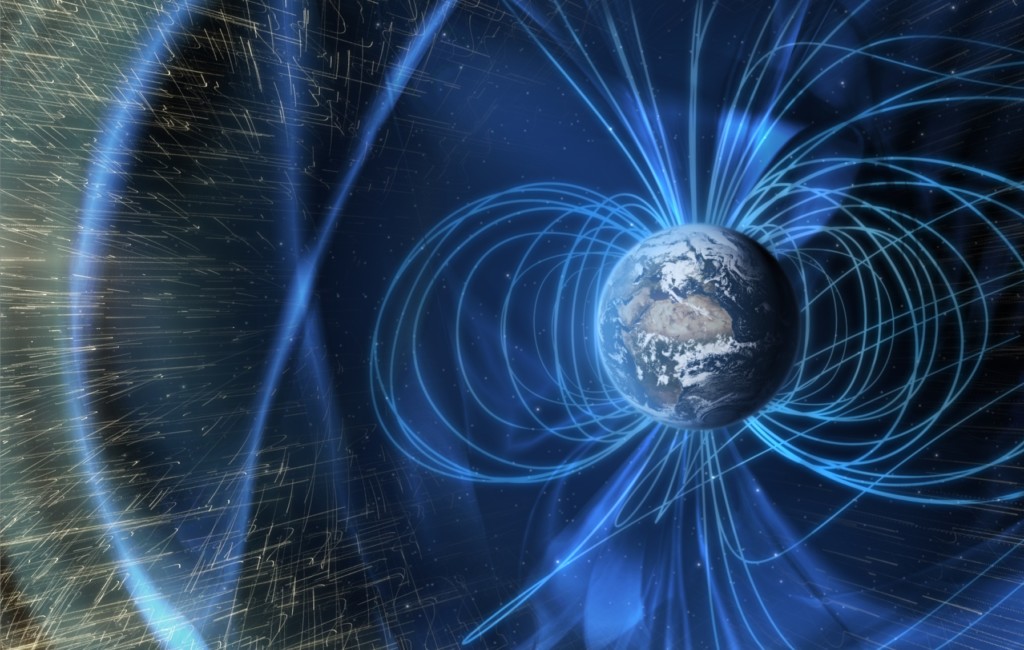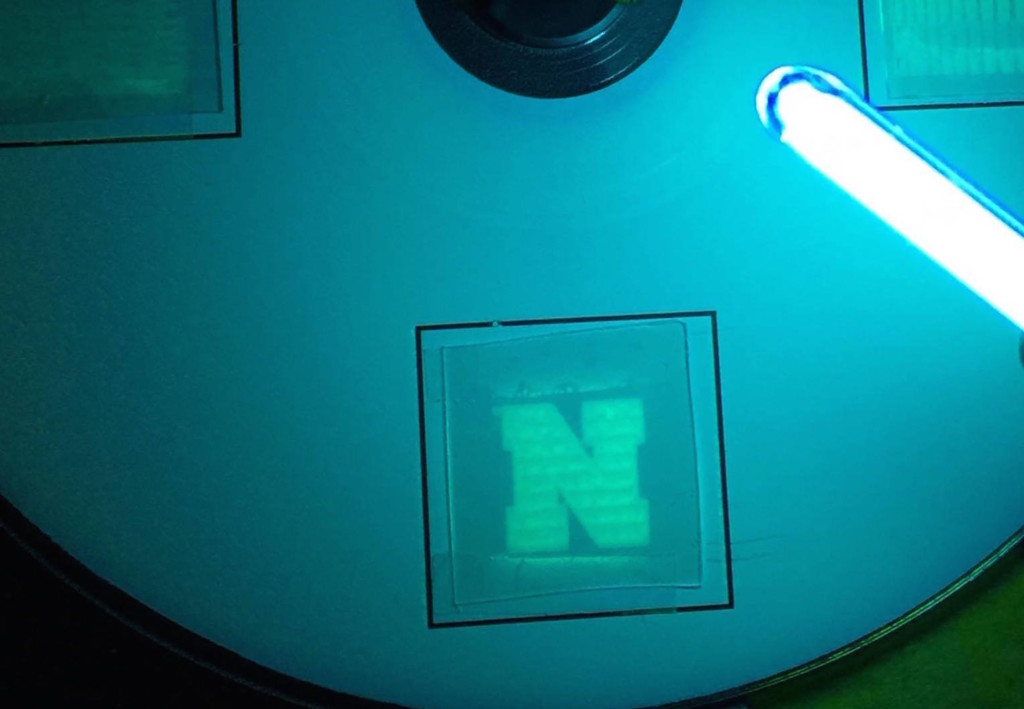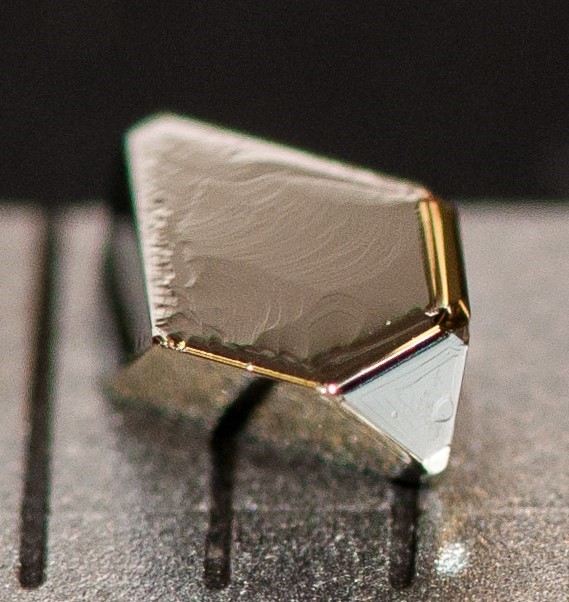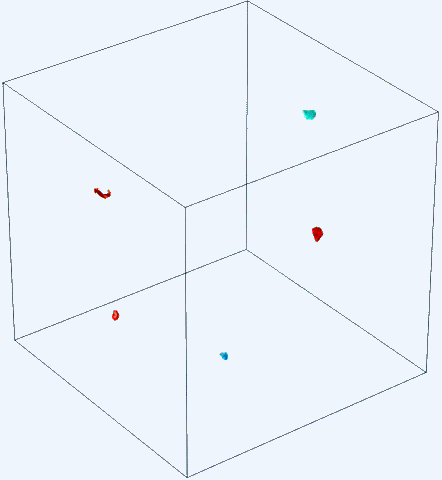How do Crystals get their Shapes?
funsizephysics2023-05-19T13:41:48-06:00Students make paper models of crystal unit cells and build a large crystal structure together while reflecting on the role of symmetry in crystal formation. This lesson is part 3 of a 4-part student-driven, lecture-free series, in which students will do card sorts, build hands-on models, solve engineering design puzzles, and more!


What is a Crystal, Anyway?
funsizephysics2023-05-19T15:33:43-06:00Crystals aren't magic, but they are amazing! In this engaging, comic-driven lesson, students do individual and group-based activities to understand the characteristics of crystals (like quartz) versus amorphous solids (like glass). This lesson is part 1 of a 4-part student-driven, lecture-free series in which students will do card sorts, build hands-on models, solve engineering design puzzles, and more!


Unit Cells and Their Molecular Building Blocks
funsizephysics2023-05-19T15:33:04-06:00Through hands-on activities using gumdrops and toothpicks, students will learn about unit cells that make up the repeating structures of crystals like table salt. This lesson is part 2 of a 4-part student-driven, lecture-free series, in which students will do card sorts, build hands-on models, solve engineering design puzzles, and more!


Heat Flow and Quantum Oscillators
stefanke2021-07-14T10:28:06-06:00Materials that are absolutely perfect—in other words, materials that contain no defect of any kind—are usually not very interesting. Imagine being married to a saint: you would quickly be bored out of your mind! Defects and impurities can considerably change many properties of materials in ways that allow a wide range of applications.


Straining for More Stable Memory
xhong22021-07-14T10:35:44-06:00Would you rather have data storage that is compact or reliable? Both, of course! Digital electronic devices like hard drives rely on magnetic memory to store data, encoding information as “0”s and “1”s that correspond to the direction of the magnetic moment, or spin, of atoms in individual bits of material. For magnetic memory to work, the magnetization should not change until the data is erased or rewritten. Unfortunately, some magnetic materials that are promising for high density storage have low data stability, which can be improved by squeezing or stretching the crystal structures of magnetic memory materials, enhancing a material property called magnetic anisotropy.


The Adventures of Solar Neutrons
pdowben12021-07-14T10:37:44-06:00Neutron radiation detection is an important issue for the space program, satellite communications, and national defense. But since neutrons have no electric charge, they can pass through many kinds of solid objects without stopping. This makes it difficult to build devices to detect them, so we need special materials that can absorb neutrons and leave a measurable signature when they do. Researchers at the University of Nebraska-Lincoln are studying the effects of solar neutron radiation on two types of materials on the International Space Station (ISS), using detectors made of very stable compounds that contain boron-10 and lithium-6.


The future of solar energy is . . . an inkjet printer?!
carolina.ilie2021-07-14T10:38:58-06:00To increase our use of solar energy, we need to create more efficient, stable, and cost-effective solar cells. What if we could use an inkjet printer to fabricate them? A new type of solar cell uses a class of materials called perovskites, which have a special crystal structure that interacts with light in a way that produces an electric voltage. We've developed a method to produce perovskite thin films using an inket printer, which in the future could pave the way to manufacture solar cells that are surprisingly simple and cheap.


Magnets, Gatorade, and the Quest for Energy-Efficient Computers
leighton2021-07-14T10:40:22-06:00Melting and Freezing Bits and Bytes
helena.silva@uconn.edu2021-07-14T10:48:49-06:00In phase-change memory (PCM), nanoscale volumes of a special kind of glass compound are heated by very short electrical pulses, causing the atomic structure of the material to switch between an ordered phase and a disordered phase. These phase-change materials have been used for years to store data on rewritable CDs and DVDs, but until recently, the large energy required to change the state of the material has made it impractical for electronic memory. If this challenge can be overcome, phase-change memory can be integrated with conventional silicon electronics for high-capacity data storage and more efficient computation. Click to read more about how we are working to make this new technology a reality!





